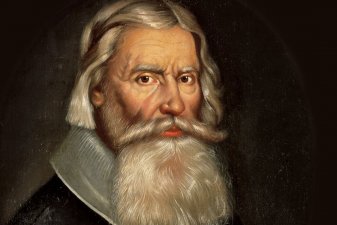In the depth of winter, as snowflakes drifted down like feathers from the heavens, a queen sat by her ebony-framed window, sewing. A sudden prick of her needle drew blood—three drops, crimson against the white snow. The sight inspired her wish for a child “white as snow, red as blood, and black as ebony.” Thus begins the Brothers Grimm’s tale of Snow White. These three drops of blood, seemingly a fleeting detail, set the stage...
Everything on Mythology and related to the Maier files series. Posts, Articles referring to myths, mythology, ancestral tales, folklore, gods and goddesses
From the veiled chapters of medieval lore to the intricate verses of sacred texts, the story of the craven angels has haunted humanity’s imagination for centuries. These ethereal beings, neither loyal to the divine nor rebellious with Satan, occupy a realm of ambiguity that defies simple categorization. Their tale is not one of heroism or outright damnation, but a lingering testament to the peril of neutrality in the face of moral conflict. The fate of...
The Divine Feminine, an enduring and often obscured aspect of humanity’s spiritual and cultural heritage, reveals profound wisdom through the interconnected disciplines of archaeology, anthropology, and mythology. Drawing on the research presented in The Divine Feminine in Ancient Europe, let’s explore two pivotal theses that illuminate how the feminine archetype shaped and reflected ancient societies. Rediscovering Sacred Spaces through Archaeology Archaeological evidence reveals that pre-Christian Europe held the feminine as central to spiritual and communal life. Excavations of Neolithic and […]...
November brings a veil of enchantment to the Northern Hemisphere. Ancient traditions and winter lore weave a rich tapestry of myth and celebration, starting with Saint Martin’s Day, or Martlemas, on November 11th. In Dutch, Germanic, and Celtic lands, this day is more than a feast; it is a gateway to the mysterious winter season, filled with both heavenly and fearsome visitors. Saint Martin: The Rider of Legends In Silesia, they say Saint Martin arrives...
The Vǫluspá, one of the most remarkable poems of the Old Norse tradition, stands as a monumental piece of literature within the Poetic Edda. Its narrative recounts the creation of the world, its eventual destruction, and its prophesied rebirth. Within this grand cosmological scope, the Vǫluspá is presented as a prophecy delivered by a vǫlva, a seeress who commands great authority and wisdom. The poem, which captures both pre-Christian and Christian influences, has been analyzed...
The Women Who Fly: Goddesses, Witches, Mystics, and Other Airborne Females by Serinity Young is a captivating exploration of female figures across history and myth who possess the ability to fly or transcend the earth. From ancient goddesses to modern-day aviatrixes, this book reveals the diverse and powerful stories of women who have taken to the skies, either literally or symbolically, challenging earthly boundaries and societal norms. For enthusiasts of the Maier Files series, Young’s work offers a wealth of […]...
Thor’s Hammer, known as Mjölnir, is one of the most iconic symbols in Norse mythology. Revered by ancient Norse societies, Mjölnir was more than just a weapon of war; it was a symbol of protection, blessing, and power. The thunderous hammer was wielded by Thor, the god of thunder, who used it to protect Asgard and Midgard (the Earth) from giants and other monstrous beings. The Complex Nature of Thor Thor might appear to be...
The Mithras Cult, a mystery religion practiced in the Roman Empire, has long fascinated scholars and history enthusiasts alike. While the exact origins of the cult remain somewhat obscure, its practices and symbols have been studied extensively. Roger Beck’s book, “The Religion of the Mithras Cult in the Roman Empire: Mysteries of the Unconquered Sun,” offers an in-depth exploration of this enigmatic religion. In this article, we will delve into some of the key aspects...
Initiation—an evocative term that conjures images of secret rites and profound transformations—has intrigued anthropologists and scholars of religion for generations. As Joseph Henderson wisely noted in his seminal work, Thresholds of Initiation, “Initiation more than any other body of knowledge has suffered throughout history from the fate of continually being forgotten and having to be rediscovered” (Henderson 2005: 1). In 1909, a remarkable resurgence of interest in initiation rites occurred, thanks to Arnold Van Gennep of the Ecole Sociologique in […]...
In the annals of Northern Europe during the Renaissance, amidst the flourishing of Hermeticism, Kabbalah, and Medieval magic, emerges an intriguing figure whose life and work spanned the realms of pre-Christian mythology and esoteric Renaissance knowledge. Johannes Thomae Agrivillensis Bureus, known simply as Johannes Bureus (1568-1652), embodies this unique fusion of disparate yet intertwined traditions. Despite the scarcity of information about him, his contributions to the study of Nordic mythology and runology, alongside his engagement...
The rich tapestry of human history is often woven with the delicate threads of symbolism and tradition. One such fascinating journey takes us into the ancestral cult of flowers, exploring the deep meanings associated with these blossoms across various cultures and epochs. Among the myriad flowers that have captured the human imagination, the Mayan Nicte and the Rose stand out as emblematic figures in the ancestral tapestry of flora. In Mayan culture, the Nicte, a...
In the rich tapestry of Old Norse literature, tales of encounters between Christian kings and the remnants of the old gods persist as fascinating narratives that reflect the complex interplay between the pagan past and the emerging Christian present. One such tale unfolds in the saga of Óláfs Saga Helga, captured vividly in the introductory quote. ‘Have you no desire to be like that king who was victorious against all whom he fought,who was handsome also, and accomplished in all […]...













